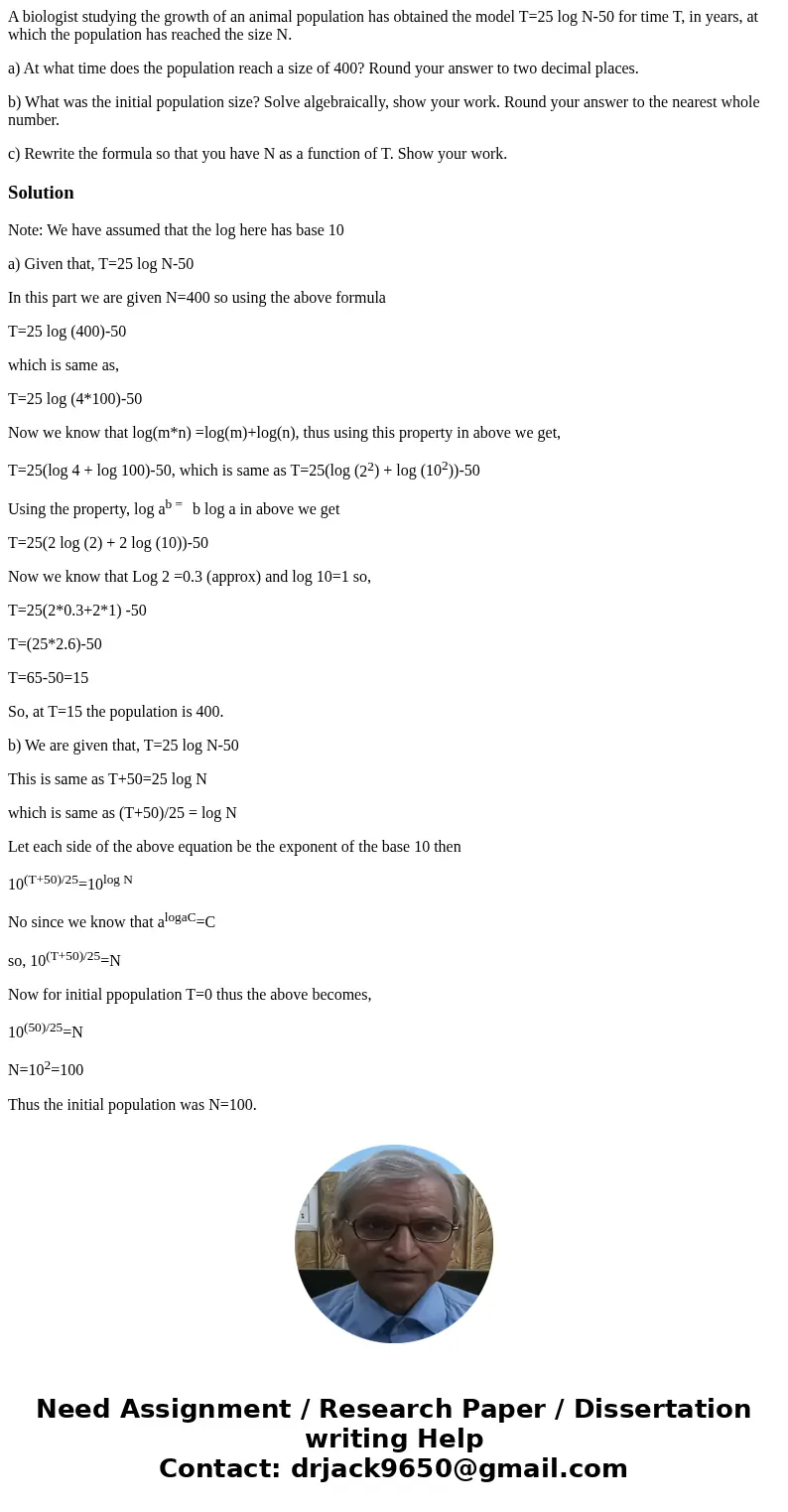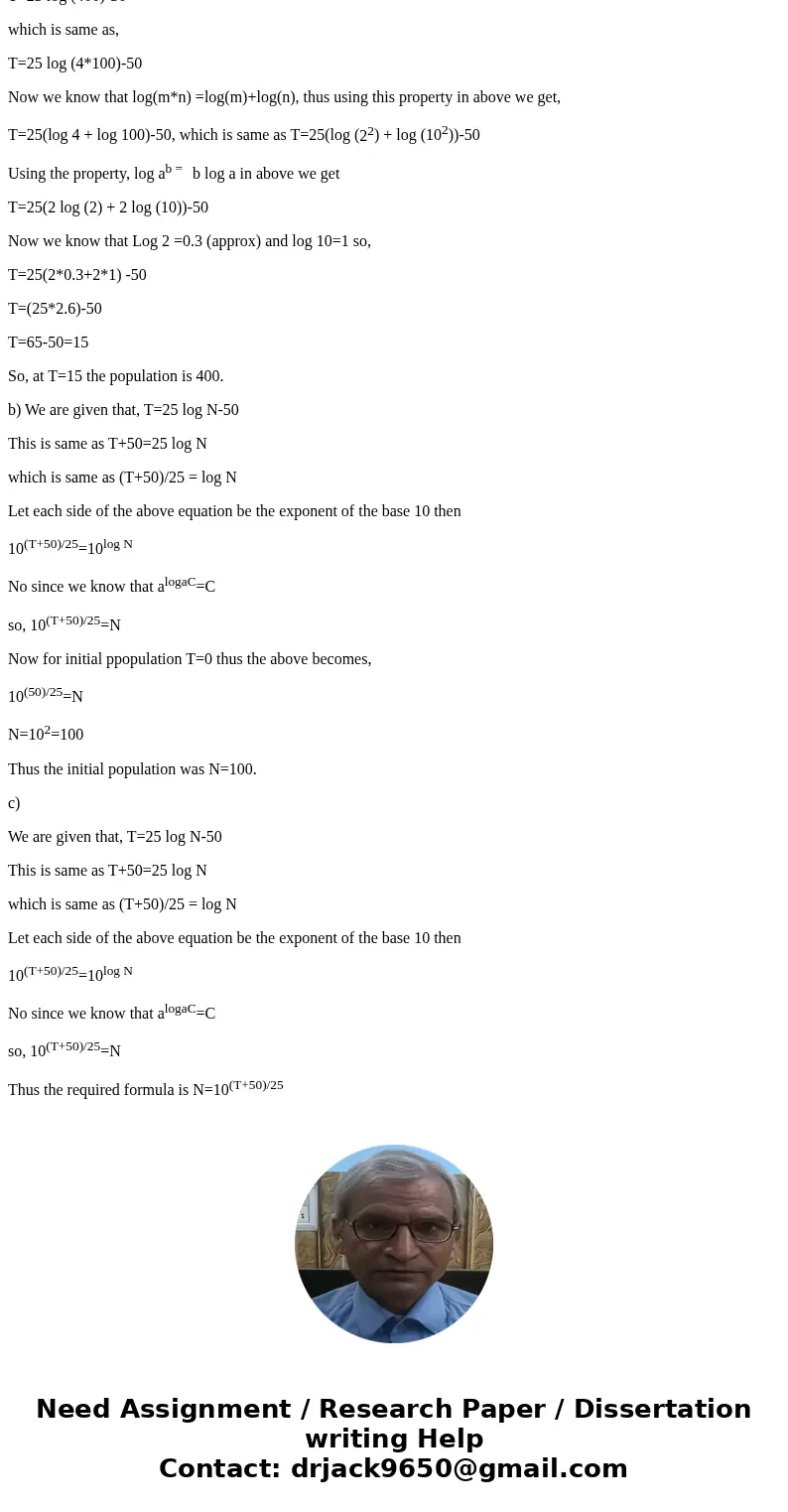A biologist studying the growth of an animal population has
A biologist studying the growth of an animal population has obtained the model T=25 log N-50 for time T, in years, at which the population has reached the size N.
a) At what time does the population reach a size of 400? Round your answer to two decimal places.
b) What was the initial population size? Solve algebraically, show your work. Round your answer to the nearest whole number.
c) Rewrite the formula so that you have N as a function of T. Show your work.
Solution
Note: We have assumed that the log here has base 10
a) Given that, T=25 log N-50
In this part we are given N=400 so using the above formula
T=25 log (400)-50
which is same as,
T=25 log (4*100)-50
Now we know that log(m*n) =log(m)+log(n), thus using this property in above we get,
T=25(log 4 + log 100)-50, which is same as T=25(log (22) + log (102))-50
Using the property, log ab = b log a in above we get
T=25(2 log (2) + 2 log (10))-50
Now we know that Log 2 =0.3 (approx) and log 10=1 so,
T=25(2*0.3+2*1) -50
T=(25*2.6)-50
T=65-50=15
So, at T=15 the population is 400.
b) We are given that, T=25 log N-50
This is same as T+50=25 log N
which is same as (T+50)/25 = log N
Let each side of the above equation be the exponent of the base 10 then
10(T+50)/25=10log N
No since we know that alogaC=C
so, 10(T+50)/25=N
Now for initial ppopulation T=0 thus the above becomes,
10(50)/25=N
N=102=100
Thus the initial population was N=100.
c)
We are given that, T=25 log N-50
This is same as T+50=25 log N
which is same as (T+50)/25 = log N
Let each side of the above equation be the exponent of the base 10 then
10(T+50)/25=10log N
No since we know that alogaC=C
so, 10(T+50)/25=N
Thus the required formula is N=10(T+50)/25


 Homework Sourse
Homework Sourse